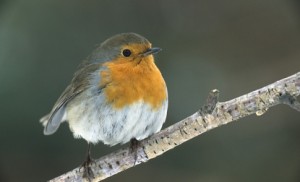Return of the Robin?

When do Robins return to the UK and when do they acquire their red breast? These are questions that a lot of people ask, and which have answers than many people don’t expect.
Some people perceive the Robin (Erithacus rubecula) as being a winter visitor, just arriving in time for the start of the cold weather and providing us with the perfect mascot to adorn the front of our Christmas cards. Our beloved Robin redbreasts are, however, present all year round, but may just be overlooked by most people.
So why do people just start noticing Robins and their distinctive red breasts around the Christmas period? There are a few different reasons why this could be the case;
- Our resident Robins are joined in the winter months by migrants from Scandanavia, meaning that the number of Robins does actually increase in the winter.
- Juvenile Robins lack the characteristic red bib, not acquiring it fully until 3-4 months after fledging. This again means that there are more red-breasted Robins around in the winter months.
- Or, it could just be the deep-set ties we have made with Robins and the festive period, meaning that we are much more conscious and appreciative of them during this time!
There are many theories regarding why Robins are now associated with Christmas, the most popular of which evolved from Victorian postmen. In the 1800’s British postmen wore uniforms emblazoned with the Royal colour, red, in honour of the crown. The postmen, delivering the nations Christmas cards, were said to resemble the much-loved bird, and therefore earned themselves the nickname Robins. It wasn’t until after this that their avian namesake began appearing on Christmas cards. Our humble Robin has now gone on to become one of the nation’s favourite birds and can be found on stamps, wrapping paper, ornaments and all other things festive.
So there is no better time to appreciate our Robins than over the winter months, but remember to keep your eyes peeled for them all year round, red-breasted or not!
Reserve Sightings
Some of the less common sighting over the past few weeks include; 2 Spotted Redshanks on 2nd December at the Lurgies, a Jack Snipe on the 2nd, a Red-throated Diver on the 2nd and 7th, a Water Rail on the 7th and a Black-Necked Grebe on the 25th of November, all seen from the Visitor Centre.
Craig Shepherd,
Visitor Centre Assistant Manager.
Help protect Scotland’s wildlife
Our work to save Scotland’s wildlife is made possible thanks to the generosity of our members and supporters.
Join today from just £3 a month to help protect the species you love.
Preface
When do Robins return to the UK and when do they acquire their red breast? These are questions that a lot of people ask, and which have answers than …
